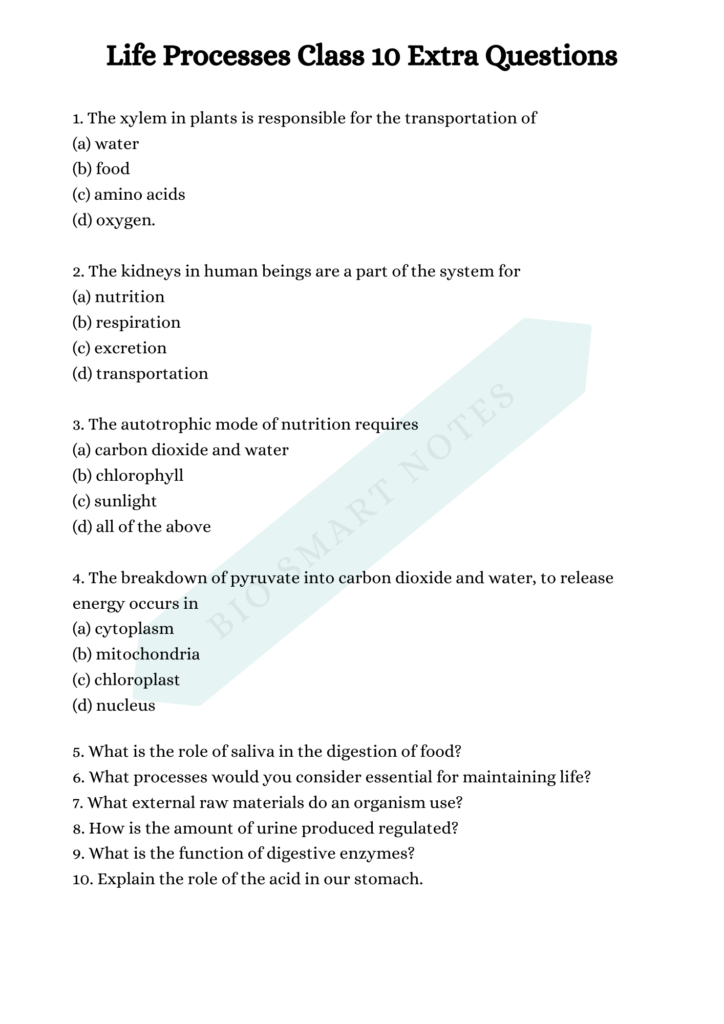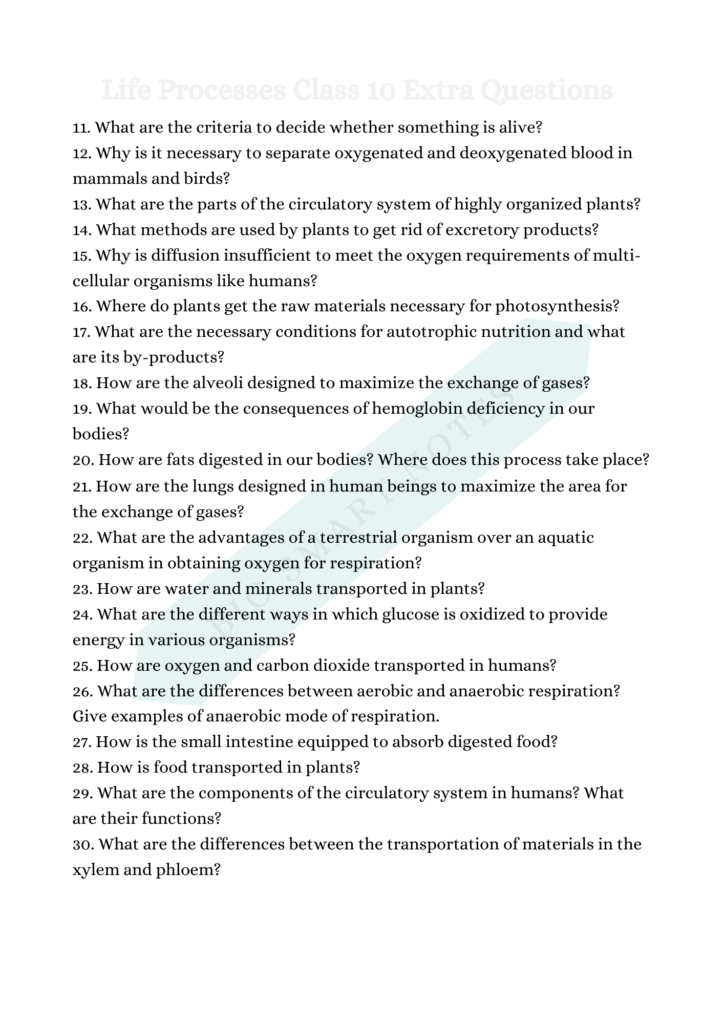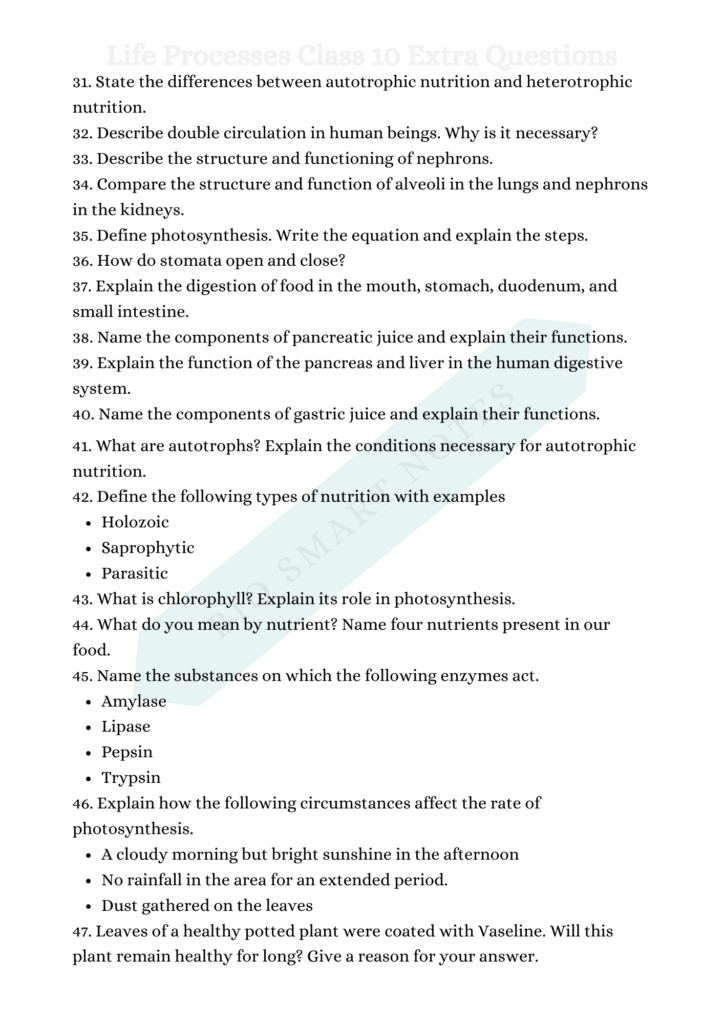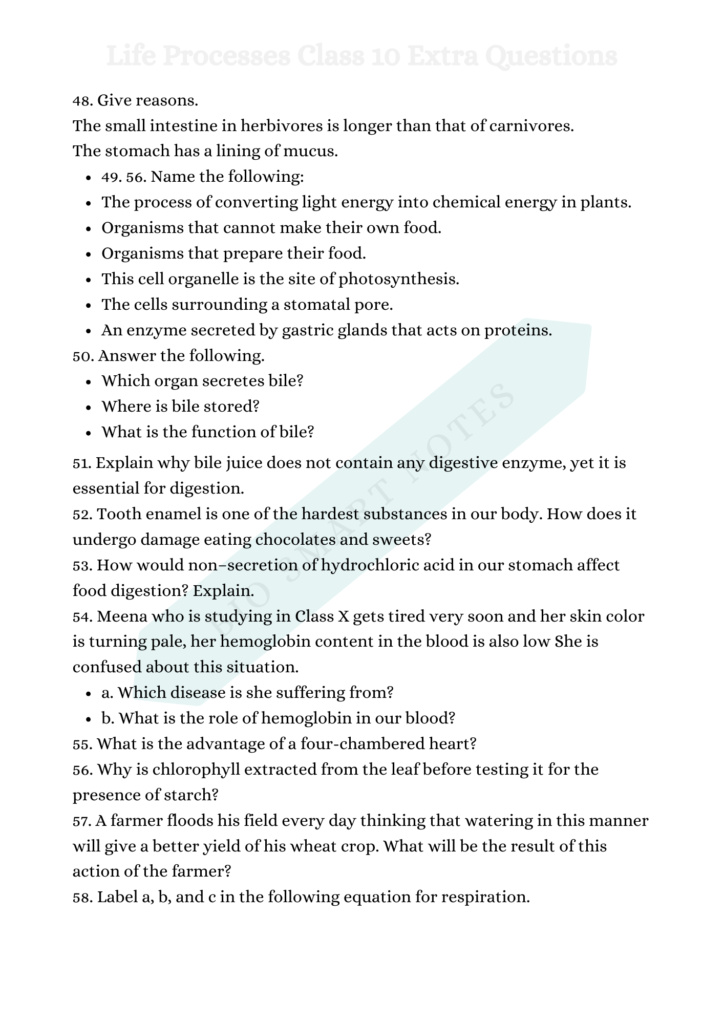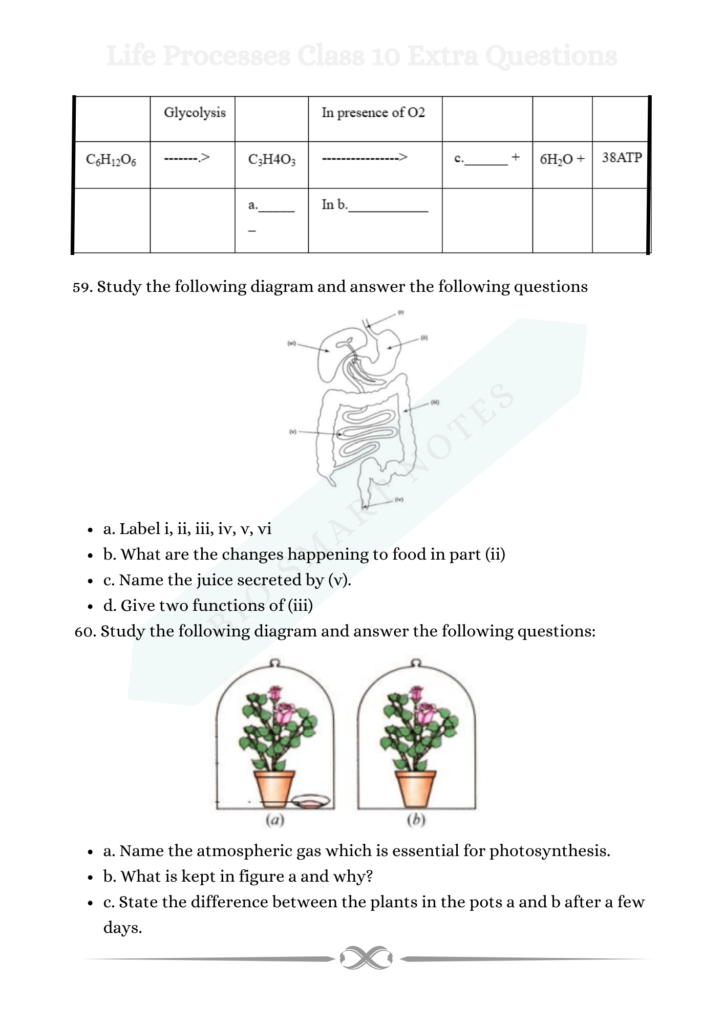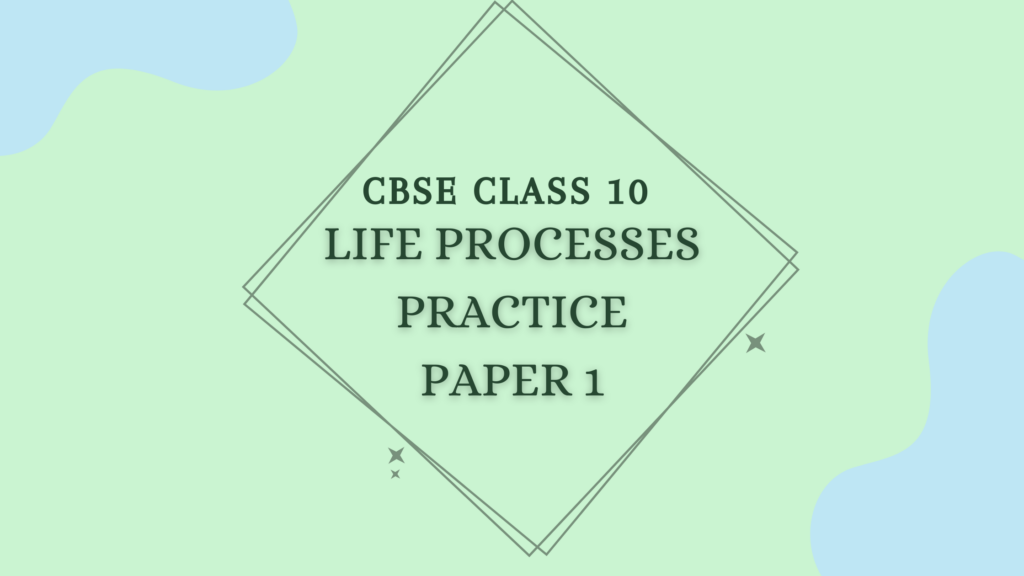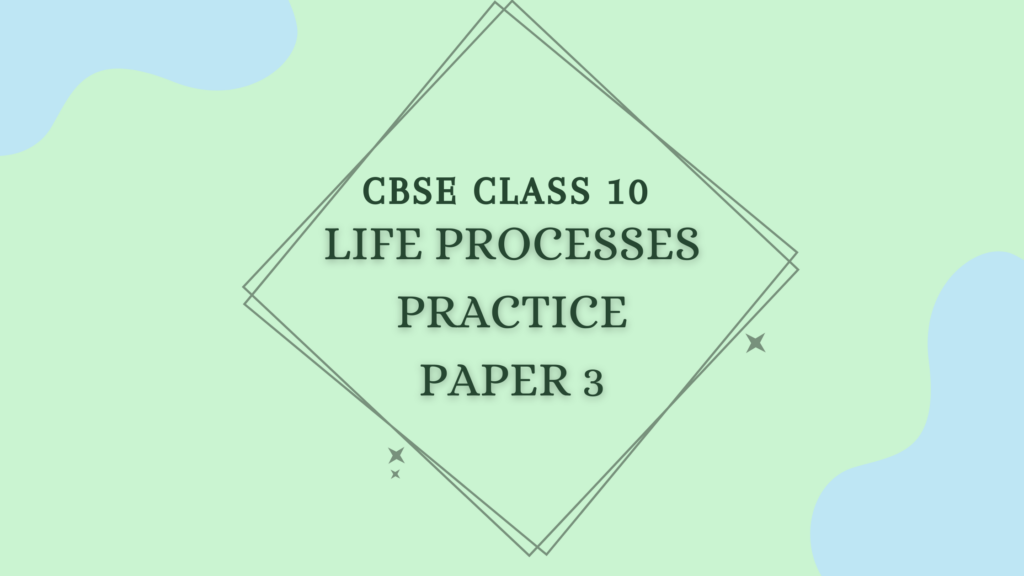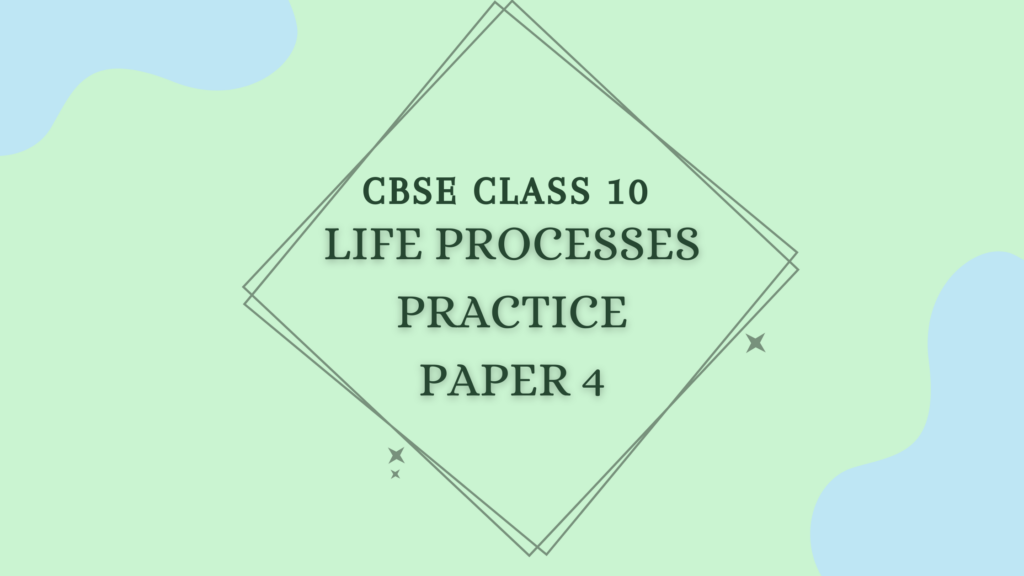Life Processes Class 10 Extra Questions
To prepare for Class 10 board exams, especially on the crucial chapter like “Life Processes,” understanding the concepts is essential. These extra questions will help you practice better.
The chapter “Life Processes” covers core biological functions such as nutrition, respiration, transportation, and excretion, which lay the foundation of biological studies.
Practicing extra questions on these topics will help you with a comprehensive understanding and prepare you not only for board exams but also for further studies in biology.
Introduction to Life Processes
- Overview: The chapter “Life Processes” deals with various biological functions that organisms need to survive, grow, and reproduce.
- Importance: This chapter builds a solid base for understanding more advanced biological concepts. It is particularly crucial to master it to improve overall exam performance and comprehension in biology.
Why Practice Extra Questions?
These extra questions give you a wider array of question formats and approaches, enhancing your confidence and understanding. Here’s how extra questions help:
Benefits of Practicing Extra Questions
Practicing extra questions has several advantages beyond textbook learning, particularly in a subject like biology, which combines theoretical knowledge with practical understanding.
- Improves Retention: Extra practice helps memorize complex processes and definitions, making it easier to recall during exams.
- Enhances Problem-Solving Skills: Working through different questions enhances your analytical abilities, allowing you to answer complex questions with greater clarity.
- Develops Exam Strategy: Timed practice sessions will help you learn to manage time effectively and answer accurately under exam pressure.
Be Exam-Ready with Extra Questions
Extra questions are vital for you to assess how prepared you are for the board exams. They not only reinforce the content you have learned but also offer practice in time management, accuracy, and structured answers. Whether it’s definitions, explanations, or diagram-based questions, tackling various question types helps ensure that you are well-prepared for any challenge.
In summary, additional practice on the chapter “Life Processes” is a highly effective strategy for you to excel in the exams. It strengthens your knowledge of fundamental biology, builds confidence, and enhances your academic performance.
